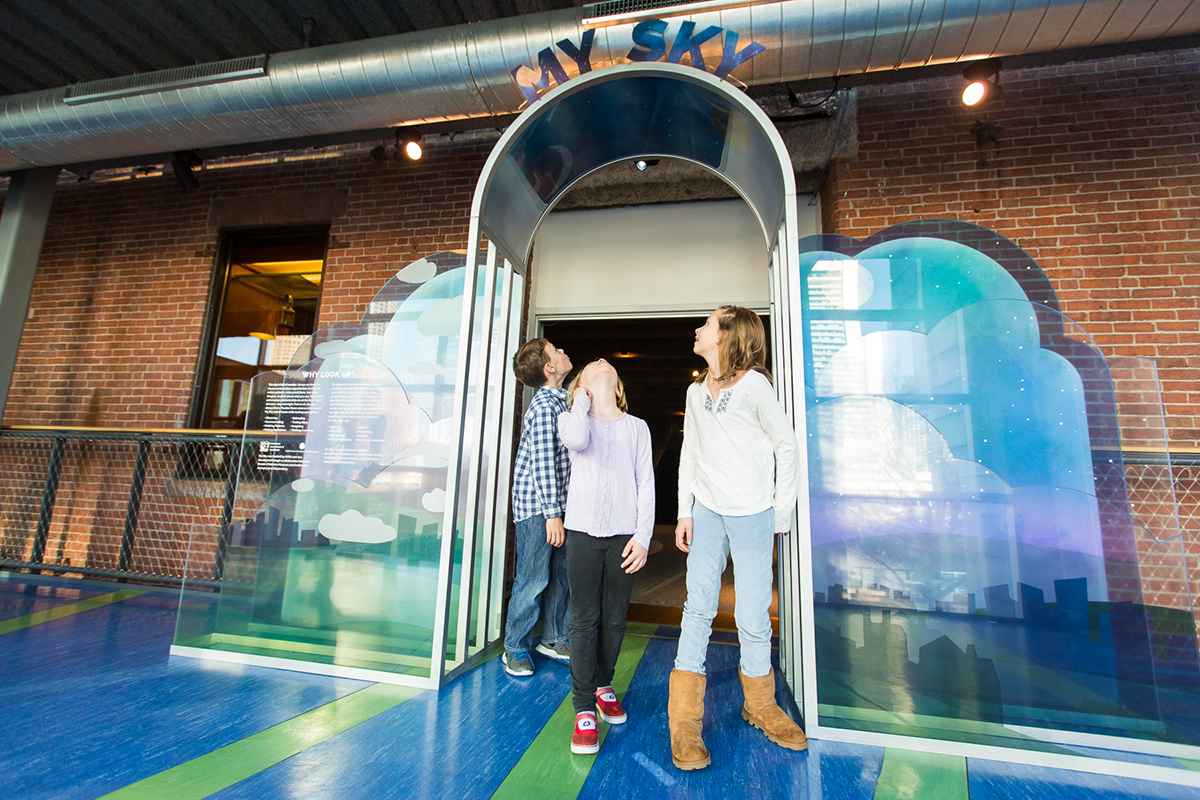
Enter My Sky through a vivid archway, bright with celestial imagery. A gobo projector illuminates an invitation on the floor, “Look up!” and sets the tone for the experience.
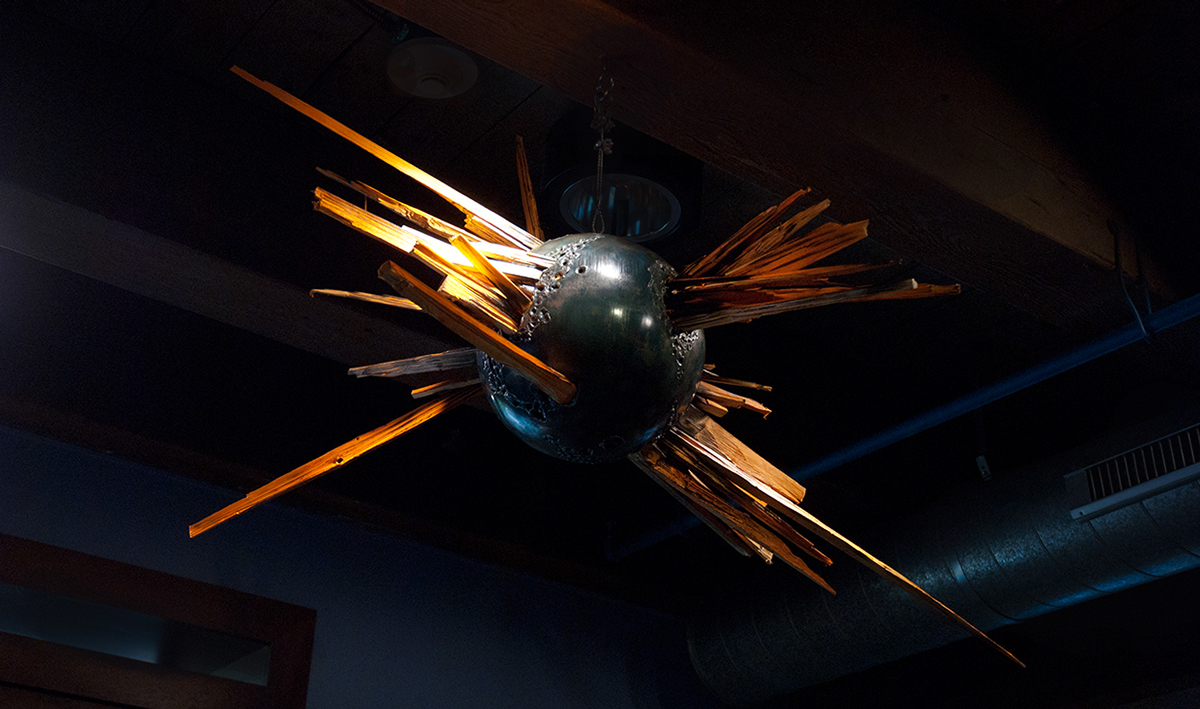
Star/Spore II is a stunning steel and wood sculpture that hangs in the gallery space and inspires awe in visitors of all ages. We commissioned the sky-inspired piece from local sculptor Hillel O'Leary. See Hillel's portfolio for more photos of this and other sculptures: http://bit.ly/1nu49Vl

The Skate Park is actually a sun dial simulator! Lights quickly shine in sequence to represent the apparent path of the Sun in the sky, making immediately observable the way the angle and length of our shadows change over the course of a day. Look closely and you'll notice custom graffiti we commissioned from Alex Brien and Matthew Chenard, local street artists from the organization Elevated Thought.

At the center of the skate park is a skateboard that you can stand on and become the gnomon of a “human sundial”as your shadow arcs across the floor as the "day" progresses. Prompts ask you to observe when your shadows are shortest and when they are longest; and you can even speed up or slow down the movement of the Sun to enhance your investigations. These observations reinforce the concept of the Sun’s apparent movement across the sky and its correlation to time of day.
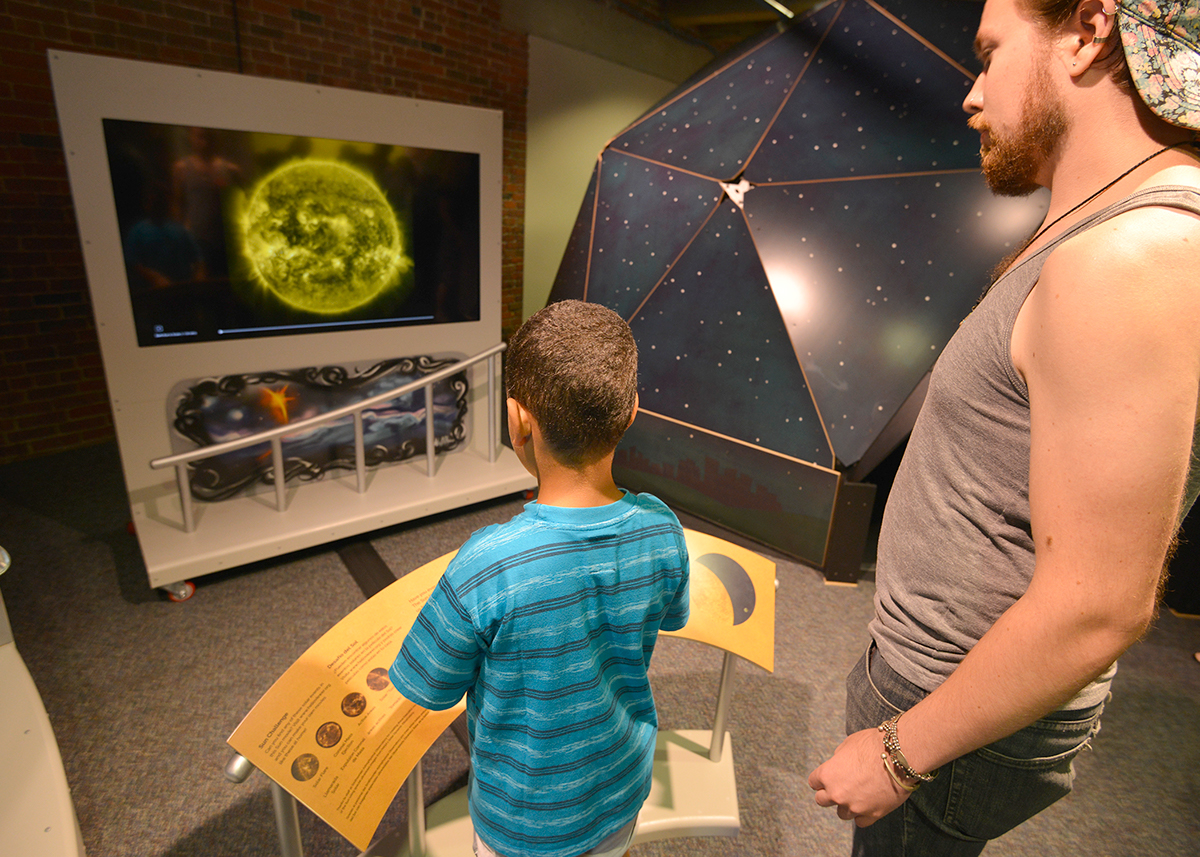
Next to the Skate Park is the Helioviewer, a giant screen displaying stunning imagery of our nearest star as seen by Solar Dynamic Observatory satellites. Turn a dial to move through a year-in-the-life movie of the Sun and watch it rotate, undulate and eject matter. See if you can find solar events in this movie like flares, coronal mass ejections, eclipses, solar tornadoes and more. You can see Moon Dome in the background. Photo by Clive Grainger.

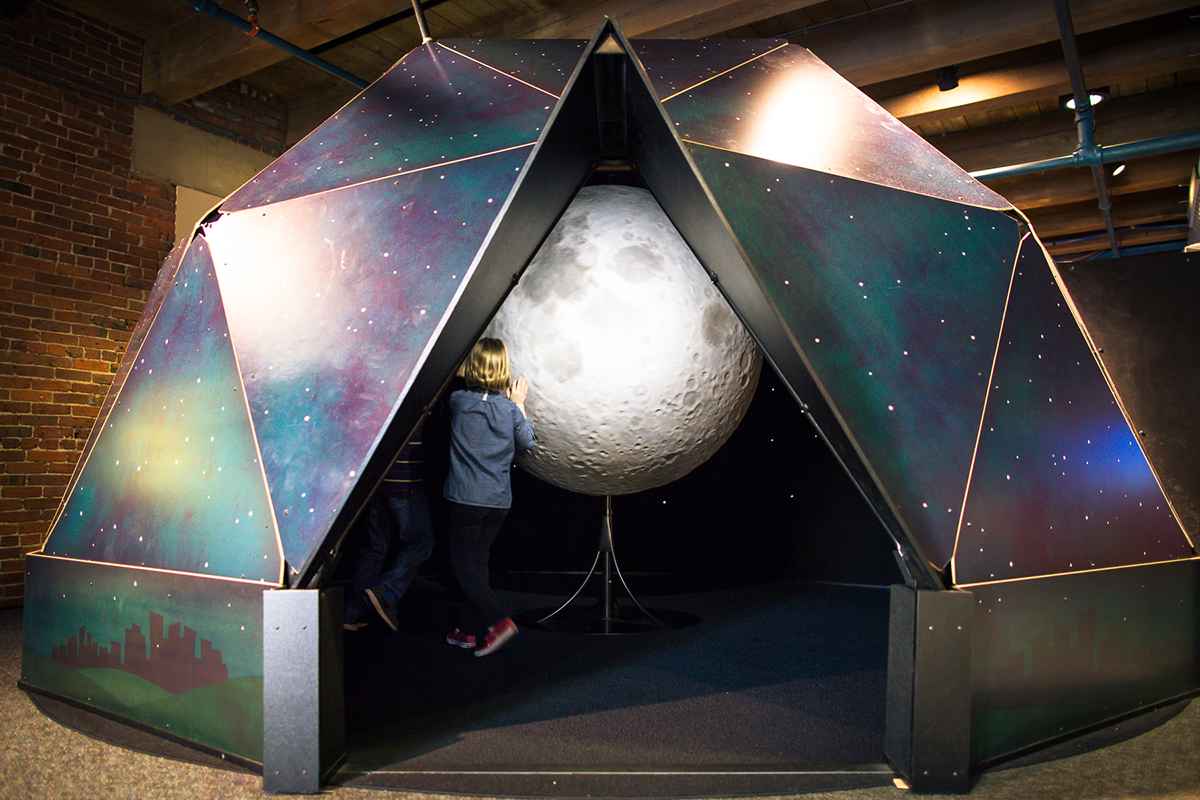
The Moon Dome is immersive, dark and quiet. Stars twinkle inside, and in the center of the dome hangs an enormous, topographically-accurate three-dimensional Moon that appears to glow.

Tucked away in a geodesic dome lit by hundreds of LED stars is a 5 foot diameter scale model of the Moon. You can rotate the model on its axis to touch and explore every crater. Photo by Clive Grainger.

The Moon was created by Blue Rhino Studios, who had the form CNC routed using a 3D solid model created from GIS data gathered and supplied by NASA's Lunar Reconnaissance Orbiter.
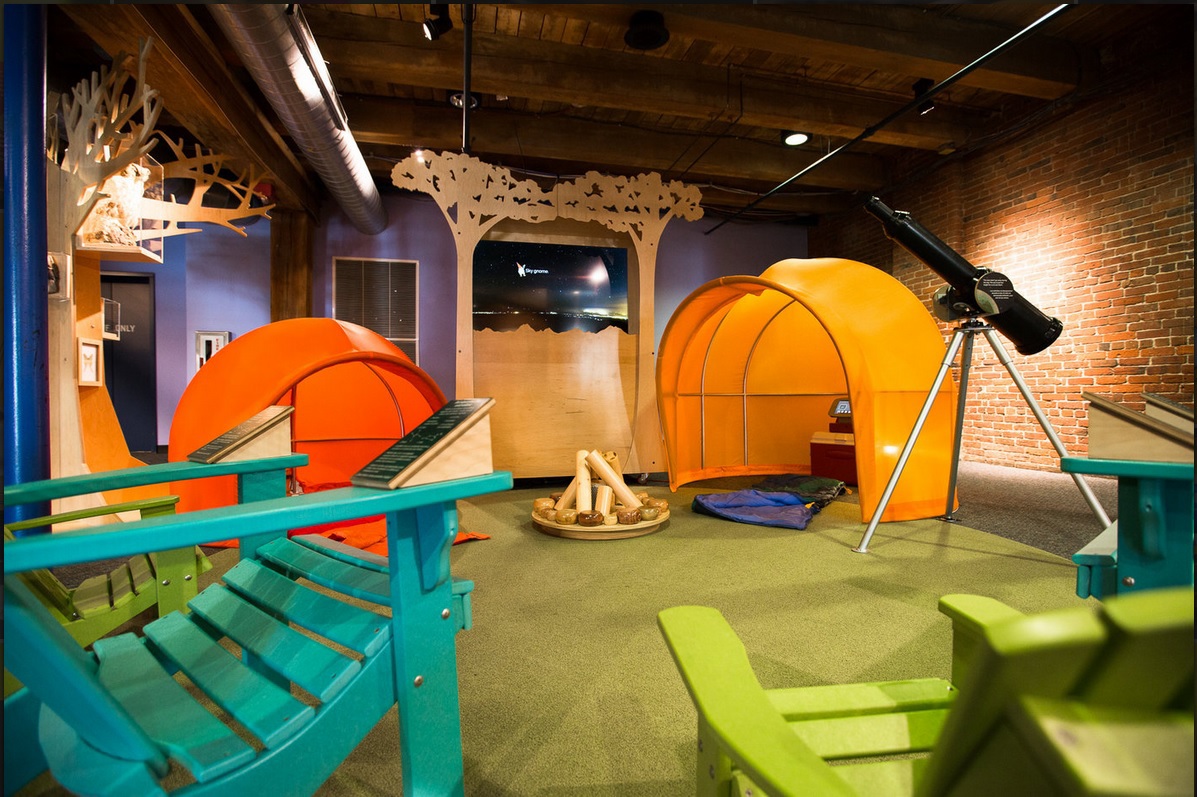
The backyard sets the scene to talk about the night sky together. Relax in Adirondack chairs, role play around the mock fire pit, and explore camping tents. A large screen overlooks the camping vignette, playing a continuous timelapse video of the stars, Moon, and Sun moving across the sky over a 24-hour period. See if you can find an array of celestial objects and events like stars, planets, constellations, the Moon rising during the day.

In the backyard tents, pull up a sleeping bag and listen to music by artists like Sleeping at Last, They Might Be Giants, Switchfoot, Train and more, all of whom were inspired by the sky above them.
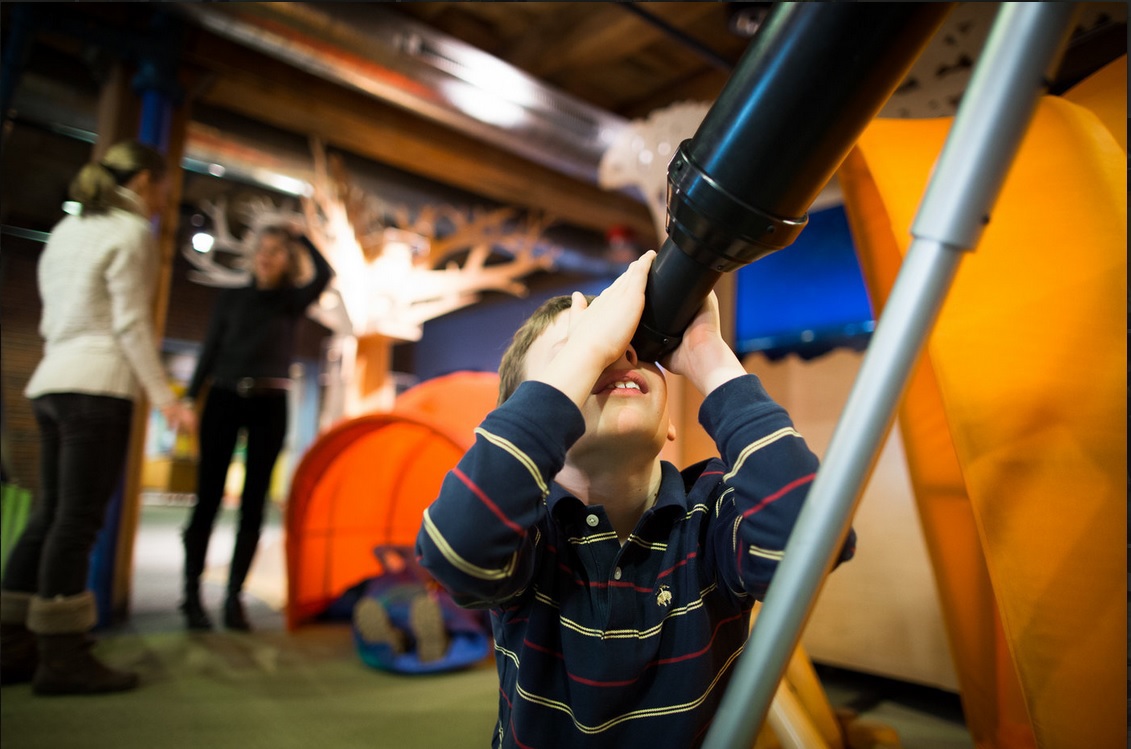
Peer through a telescope and you might be surprised at what you see! Rather than viewing a close-up of the wall across the exhibit, you see images of the stars, planets, Moon and labeled constellations in their current positions in the sky (day or night), via the Star Walk application running inside. As you move the telescope, the star map updates in real time, even showing the positions of celestial bodies below the horizon.

While exploring the backyard, you may notice a few nocturnal creatures who have taken up residence in a nearby tree. These objects come from the Museum’s vast collection of taxidermy specimens.

In the Bedroom you can explore the Moon and the stars. Investigate the phases of the Moon by manipulating an Orrery, a mechanical Moon-Earth model, on a nearby desk, and then observe some surprising changes in the sky through a window above. With Constellation Creation, find familiar constellations and invent your own.

The Orrery is a mechanical Sun/Earth/Moon model that you can manipulate, rotating the gears so that the Earth rotates and the Moon orbits the Earth. Through the window above the desk, observe a corresponding image of the Moon in the sky. When you turn the crank, observe how the light from the “Sun” shines on the Moon and creates phases as the Moon traces its path around the Earth. As the Moon changes position on the desk, the Moon phase in the window changes in correspondence with the manipulation of the model.
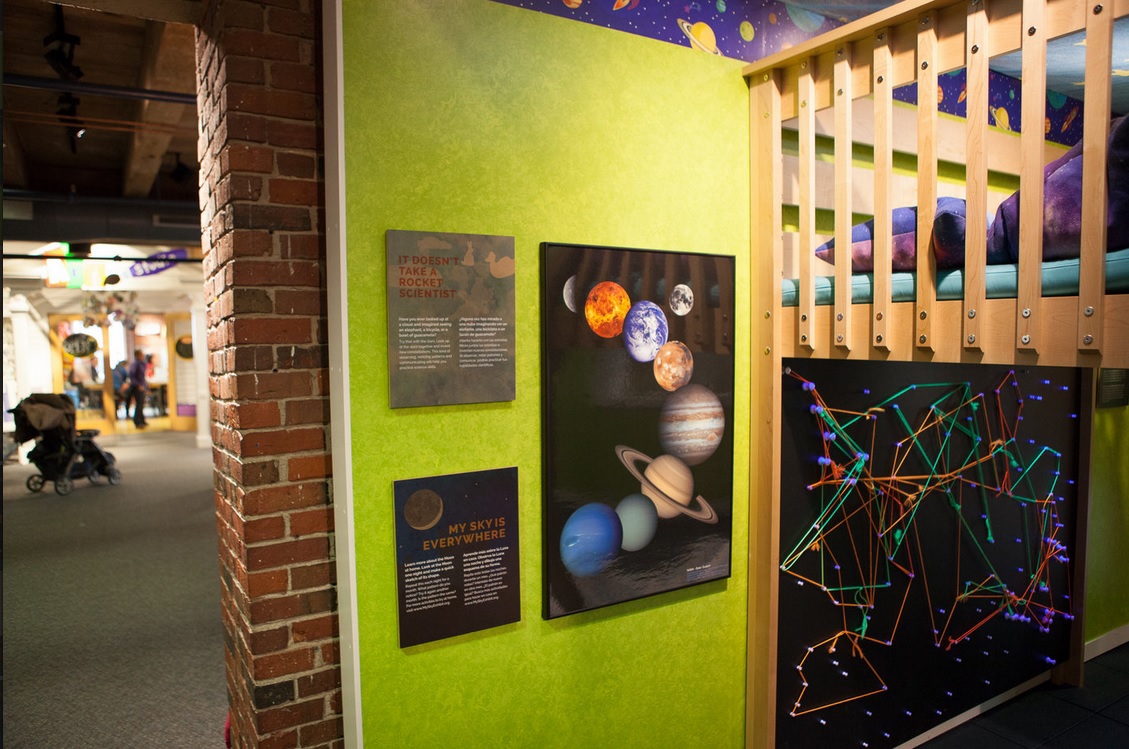
Graphic type It Doesn’t Take a Rocket Scientist, provides prompts for parents, and encouragement that they need not know all the answers about how the universe works in order to effectively engage with their child around astronomical discovery. My Sky is Everywhere graphics present at-home suggestions for parents – ways they can continue the engagement and discovery with their child about astronomy and science.

Underneath the loft bed discover Constellation Creation, a black-lit wall with pegs representing the actual stars in the night sky. Find familiar constellations like the Big Dipper and Orion, then invent your own constellations by stretching fluorescent elastic loops around these "stars".

Climb up into the Bedroom’s loft bed and gaze up at a star-speckled ceiling.

Relax on a cozy sofa and read fiction and nonfiction works about astronomy. Books and other resources created for both children and adults are available in the nearby bookshelf. On the surrounding walls hang posters of some of the beautiful imagery captured by NASA instruments alongside famous art inspired by the night sky.
